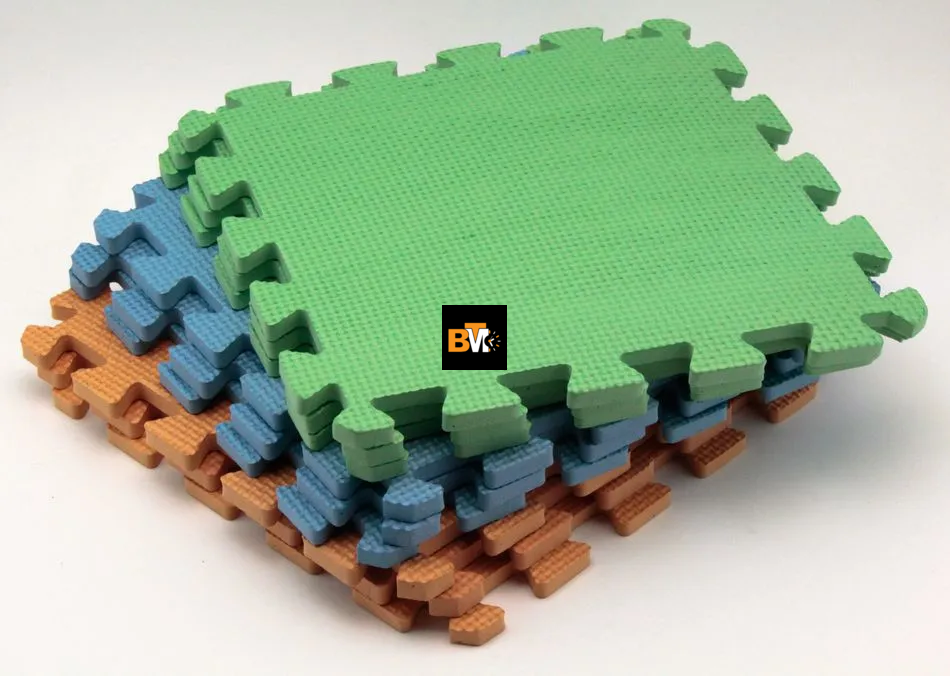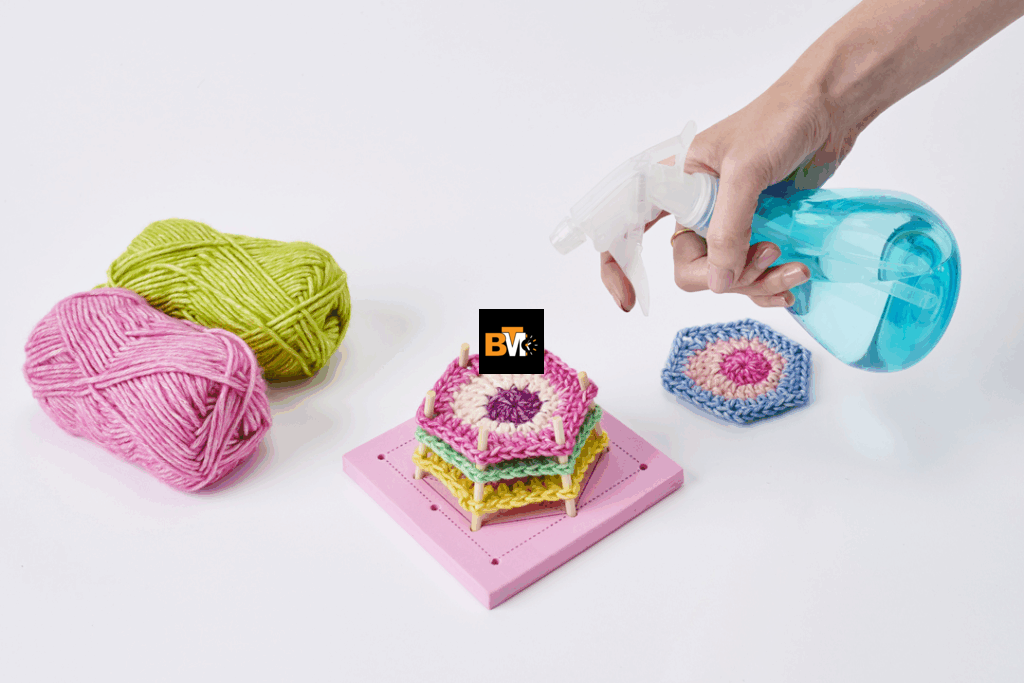Blocking mats might sound like something fancy or hard to understand, but they’re actually very simple and helpful tools used in crafting. Whether you’re a grown-up working on a big knitting project or a kid learning to crochet, blocking mats can help make your handmade items look neat and professional. Let’s explore everything you need to know about them!
What Are Blocking Mats?
Blocking mats are soft, flat surfaces used to shape and dry fabric items—usually knitted or crocheted—after they are made. When you finish creating something like a scarf or a blanket square, it might look a little wrinkled or uneven. This is where blocking mats come in. You place your project on a blocking mat, pin it into the correct shape, and let it dry. The result? A smoother, more even piece that looks neat and tidy.
Blocking mats are often made from foam and come in puzzle-like pieces that fit together. This means you can make the mat bigger or smaller depending on the size of your project. Some mats even have printed grids on them, which helps with pinning things straight. These mats are especially helpful when making items like sweaters, shawls, socks, or squares for a blanket.
Why Do Crafters Love Blocking Mats?
Crafters love blocking mats because they make handmade items look polished and professional. If you’ve ever made a project that looked a little lopsided or curled at the edges, you’ll understand how helpful blocking can be. It’s kind of like ironing your clothes to make them look nice—but for yarn!
Blocking helps align stitches and open up the patterns in lace or textured projects. Without blocking, even the most beautiful knitting or crochet work might not show its full beauty. Crafters also love that blocking mats are reusable and easy to store. Many fold or stack neatly and last a long time, which is perfect for people who craft a lot.
How to Use a Blocking Mat
Using a blocking mat is very simple, and anyone can do it—even kids with a little adult help. There are a few easy steps to follow to make sure your project turns out just right.

Wet or Steam Your Item
Before placing your project on the mat, you need to get it a little wet. This helps the yarn loosen up and hold the shape better once it dries. There are two ways to do this: wet blocking and steam blocking.
- Wet blocking means you soak your item in cool water, gently squeeze out the extra water, and lay it flat on the mat.
- Steam blocking uses a steam iron or steamer to lightly mist the fabric while it’s on the mat. Make sure not to touch the iron directly to the yarn unless it’s safe.
Lay It Flat and Pin It
After your item is damp, gently place it on the blocking mat. Stretch it a little so the edges are straight and the shape looks even. Use rust-proof pins or blocking combs to pin the edges in place. Some people use T-pins, which are strong and hold the fabric well. If your mat has a grid, it’s even easier to get straight lines and even shapes.
Let It Dry Fully
Now comes the waiting part. Leave your pinned project on the mat until it’s completely dry. This might take a few hours or even a day, depending on how wet it is and how thick the yarn is. Don’t rush this step! Once it’s fully dry, remove the pins, and you’ll see how much nicer your item looks. The edges are smooth, the size is correct, and the stitches show off beautifully.
Different Types of Blocking Mats
There are several types of blocking mats out there, and each one has its own benefits. The type you choose depends on the kind of crafting you do and how often you block items.
- Foam blocking mats – These are soft, lightweight, and very popular. They usually come in squares that fit together like puzzle pieces. Some have grid lines printed on them.
- Blocking boards – These are solid boards made from wood or covered foam. They are durable and great for people who block often.
- Knitting blocking mats – Specifically designed for knitters, these mats often include extra tools like pins or measuring tape.
- Crochet blocking mats – Similar to knitting mats, these often have grid lines and are perfect for square projects like granny squares.
- Kids’ blocking mats – These are smaller and may be used for learning or school projects. They’re a good way for kids to get started with simple crafts.
When picking a mat, make sure it’s heat-resistant and water-friendly. You’ll want something that can handle steam or damp items without getting damaged.
Best Blocking Mats for Beginners
If you’re just starting out, you don’t need the most expensive or fancy mat. Some of the best blocking mats for beginners are simple, affordable, and easy to use.
Look for mats that:
- Have grid lines to help with alignment
- Come with pins or combs included
- Are made of durable foam that doesn’t break easily
- Can lock together like a puzzle for larger projects
- Are easy to store
Some popular brands include KnitIQ, Hephaestus, WEBS, and Love2Knit. These are often found on big websites like Amazon, Joann, or directly from knitting supply stores. Most beginners find a set of 9 to 12 foam tiles is perfect for small to medium projects.
Blocking Mats for Knitting and Crochet

Great for Knitters
Blocking mats are incredibly helpful for knitters. If you’ve just finished a sweater, scarf, or even a sock, blocking it can make your hard work look even better. Knitting projects often come out curled at the edges or uneven in size. A good blocking session can fix that. When you pin the piece onto a blocking board or mat and let it dry, the edges flatten and the stitches line up perfectly. This is especially important for lace knitting, where you want the holes and patterns to stand out.
Perfect for Crochet Projects
Crochet items can also benefit from blocking. Projects like doilies, granny squares, or shawls can look bumpy or uneven after being made. Blocking mats help stretch and smooth them. Since crochet uses different tension than knitting, blocking can help fix loose or tight spots. If you’re making a blanket out of squares, blocking each square first ensures they are all the same size—making the sewing process much easier.
Can Kids Use Blocking Mats Too?
Yes, they can! Blocking is a fun and easy way for kids to finish their projects. Just make sure a grown-up helps with the water or steam part. Once the item is damp, kids can help lay it out and place the pins (with safety tips). There are even smaller blocking mats that are just the right size for kids’ projects, like doll clothes or mini blankets. It teaches kids how to take care of their handmade creations and gives them a sense of pride in how nice their items look at the end.
Where to Buy Blocking Mats in the USA
Blocking mats are easy to find in the USA. You can buy them online or in craft stores. Popular online stores include Amazon, Etsy, Joann Fabrics, Michaels, and WeCrochet. You can also find them at local yarn shops, which often carry high-quality mats and may offer advice on which ones are best for your needs.
When shopping, look at customer reviews, check if the mats come with pins, and compare prices. Some sets come in bundles with measuring tools, storage bags, or extra accessories. If you’re shopping for a child crafter, look for mats with soft edges and safe materials.
The Bottom Line
Blocking mats are a simple but powerful tool for both beginners and experienced crafters. Whether you knit, crochet, or teach kids how to make yarn projects, these mats help turn your work from “almost done” to “wow, that looks amazing!” They are affordable, easy to use, and make a big difference in how finished projects look.
Even if you’re just starting your first scarf or trying out a few granny squares, using a blocking mat will make your projects shine. So don’t worry if it sounds new or fancy—just grab a mat, get your pins, and watch your craft magic happen!







Leave a Reply